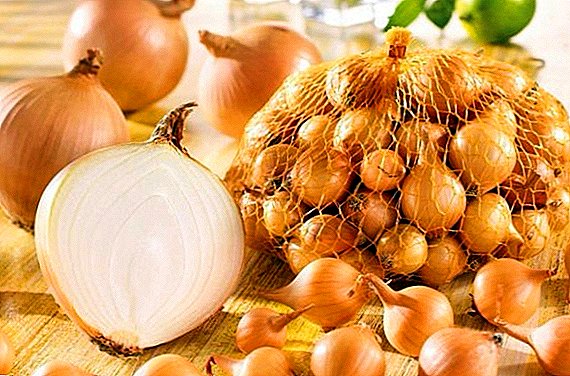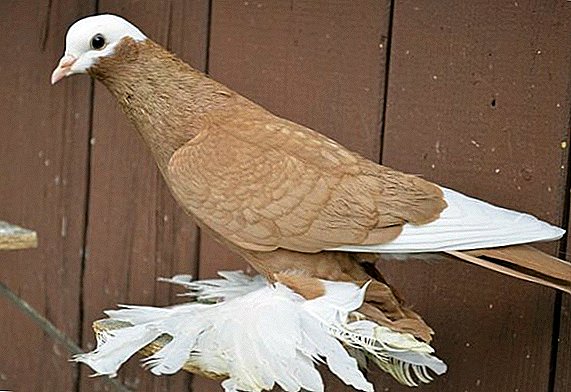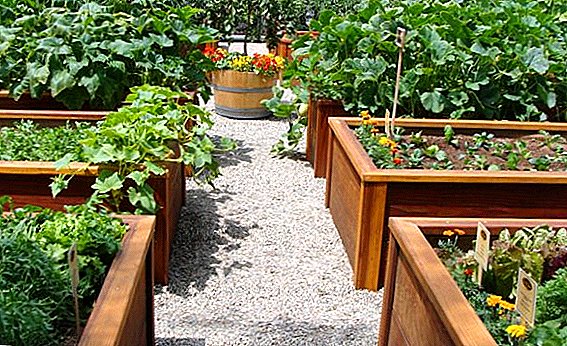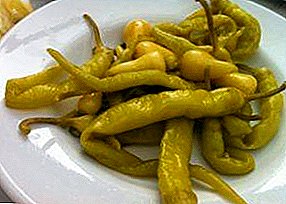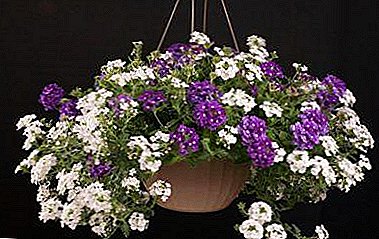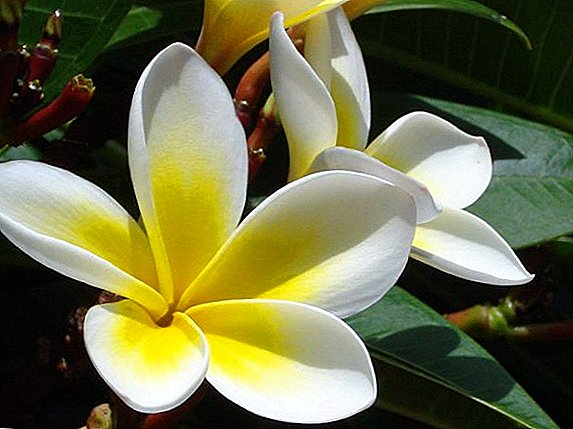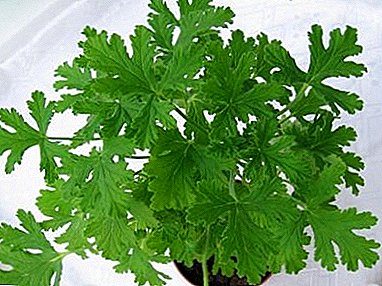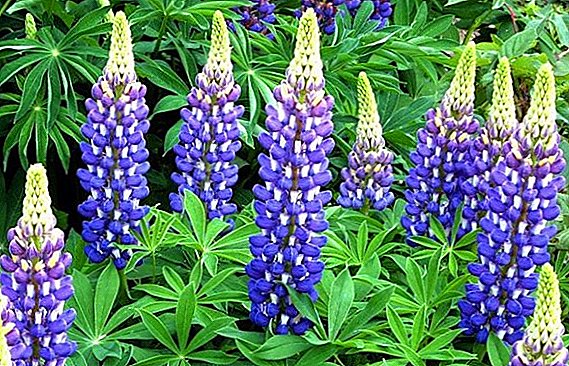 Lupine as an ornamental plant is a popular part of landscape design creations. In addition, it is often used in the food and pulp and paper industries, as well as for the production of cosmetics and medical products, soaps, plastics and other things.
Lupine as an ornamental plant is a popular part of landscape design creations. In addition, it is often used in the food and pulp and paper industries, as well as for the production of cosmetics and medical products, soaps, plastics and other things.
This unique plant has many varieties, among which are annuals, biennials and perennials. The article focuses on a multi-leaf lupine, a general description of the species, features of planting and caring for them.
Description of the species
Lupine (Lat. Lupinus polyphyllus) is an unpretentious perennial type of ornamental gardening plants. Representatives of this species have straight stems with palmate leaves, large candle-shaped inflorescences (lupine flowers resemble brushes) and reach 1.5 m in height.  Their root system penetrates the ground at 1.5–2 m. This plant belongs to the legume family. Its fruit is a bean with seeds (up to 45 pcs.) Of irregular shape. Visually the lupine is presented in the photo.
Their root system penetrates the ground at 1.5–2 m. This plant belongs to the legume family. Its fruit is a bean with seeds (up to 45 pcs.) Of irregular shape. Visually the lupine is presented in the photo.
Did you know? The beneficial property of lupine is the formation of nitrogen in root tubers.This perennial plant is widespread in our area because of its resistance to frost. There is a huge number of its varieties, characterized by bright color.
Popular varieties
Flower growers offer the following multi-leaf varieties:
- "Gallery Red";
- "Tutti Frutti";
- "Fräulein";
- "Gladiator";
- "Persian Slipper";
- "Manhattan Lights";
- "Saffron".







Did you know? Some lupine varieties can grow even in the desert areas of the United States, Chile, Peru, and in the oases of the Sahara.
One of the most popular varieties - "Gallery Red". The plant, preferring fertile, loose soil and sunlight, blooms twice a year - June, August. Its height is 50-55 cm. The variety "Fräulein" is a culture with soft pink and white buds, which bloom from June to August. Just like the plants of the variety "Gallery Red", its representatives prefer open and sunny terrain.
For lovers of the sun are representatives of the varieties "Gladiator" and "Saffron". The latter have bright yellow inflorescences. For representatives of the same variety "Gladiator" characteristic salmon-yellow color and a height of 60 cm.
Lupine, like many other Legumes are used as a siderata. To improve the structure of the soil is also used mustard white, phacelia, rye.
 Variety "Tutti Frutti" blooms from July to September and gives preference to light drained soil in partial shade. Plant height reaches 1 m. Plants varieties "Persian Slipper" are distinguished by their blue-white flowers. They reach 90 cm in height and bloom from May to October.
Variety "Tutti Frutti" blooms from July to September and gives preference to light drained soil in partial shade. Plant height reaches 1 m. Plants varieties "Persian Slipper" are distinguished by their blue-white flowers. They reach 90 cm in height and bloom from May to October.In the same period, flowering of plants with yellow-violet inflorescences occurs, which belong to the variety "Manhattan Lights". They have a height of about 60 cm. Multi-leaved lupine does not require special conditions, but the question of how to plant it properly still arises.
Where to plant a plant?
Despite the simplicity of the plant, it is worthwhile to approach the choice of a place for its planting wisely. Each of the varieties has its own preferences for lighting and soil, but there are also general recommendations for all. 
Location and lighting
As a rule, this culture is planted in the spring (April - the first decade of May) or in the fall. Plants better planted in sunny areas. Penumbra is also a good option for their landing. But in a too dark place, these representatives of the legumes will not take root. Land for spring planting is prepared in the fall.
Soil type for lupins
The plant is also characterized by unpretentiousness to the soil. The main requirement is a fresh and loose soil. Pre-enrichment of the soil with fertilizers will positively affect the flowering of the ornamental culture. Ideal for a multi-leaf lupine - slightly alkaline or slightly acid, loamy or sandy soil.  The excessively acidic soil must be agglomerated (to make dolomite or lime flour), otherwise the plant will weaken and its leaves will have a pale color. A repeated liming procedure may be needed only after 5 years. Alkaline soils must be digged with peat, otherwise the planted crop will suffer leaf chlorosis (a disease in which the leaves of the plant turn yellow).
The excessively acidic soil must be agglomerated (to make dolomite or lime flour), otherwise the plant will weaken and its leaves will have a pale color. A repeated liming procedure may be needed only after 5 years. Alkaline soils must be digged with peat, otherwise the planted crop will suffer leaf chlorosis (a disease in which the leaves of the plant turn yellow).
Breeding
Lupins reproduce by using seeds or cuttings, as a result of which experts distinguish two types:
- seed reproduction;
- vegetative propagation.
Seed
During the period of ripening, the fruits of the legume are cracked, and the seeds spread by the wind around the surrounding area and subsequently germinate (leaves with stomata appear). To get seedlings, you must initially prepare and fertilize the soil with peat, turf soil and sand. Accelerating the growth of azo-absorbing bacteria can be achieved by mixing the seeds of lupine with the shredded root of an adult plant. 
Did you know? The composition of lupine is close to olive oil; it is advantageously distinguished by the absence of substances that slow down digestion.Lupine seeds, despite the differences in shape, size, color, have the same smooth and fine-meshed upper cover and remain viable for 5 years. Please note that you do not need to bury the seeds deeply.
 For careful moistening, a sufficient measure is to cover the sowing with a film or with a damp cloth. Observe the temperature conditions. 20-22 ° C - the optimum temperature for obtaining high-quality seedling material. Maintaining the correct humidity in a warm room, you will see the first shoots after two weeks.
For careful moistening, a sufficient measure is to cover the sowing with a film or with a damp cloth. Observe the temperature conditions. 20-22 ° C - the optimum temperature for obtaining high-quality seedling material. Maintaining the correct humidity in a warm room, you will see the first shoots after two weeks.  After the appearance of 3-5 leaves the plant requires transplanting to a permanent place. Too late transplantation can adversely affect the root system. Lupine seed can be grown in open ground. The recommended distance between seedlings is from 30 to 50 cm. At the same time, the seeding depth should not exceed 2-3 cm. When growing lupine from seeds, it is important to understand when to plant the seedlings and wait for the first shoots.
After the appearance of 3-5 leaves the plant requires transplanting to a permanent place. Too late transplantation can adversely affect the root system. Lupine seed can be grown in open ground. The recommended distance between seedlings is from 30 to 50 cm. At the same time, the seeding depth should not exceed 2-3 cm. When growing lupine from seeds, it is important to understand when to plant the seedlings and wait for the first shoots.  If sowing takes place in April (after the snow melts), then it is possible to observe flowering only in May of the following year. It is best to place the seeds in open ground at the end of October or at the beginning of November at a depth of 2-3 cm. After that, at the beginning of May next year, you can wait for the first shoots, and in August you can watch the flowering.
If sowing takes place in April (after the snow melts), then it is possible to observe flowering only in May of the following year. It is best to place the seeds in open ground at the end of October or at the beginning of November at a depth of 2-3 cm. After that, at the beginning of May next year, you can wait for the first shoots, and in August you can watch the flowering.  Seed propagation is not the most reliable of species. If there are several adjacent ornamental varieties, the seeds are split by color. Vegetative reproduction is used to produce a purebred plant.
Seed propagation is not the most reliable of species. If there are several adjacent ornamental varieties, the seeds are split by color. Vegetative reproduction is used to produce a purebred plant. 
Vegetative
The cutting method can be applied only to three-year-old lupins. Shrubs, which are already 5-6 years old, are not an ideal material for vegetative propagation due to the lack of lateral buds. However, if using a knife to cut the buds near the base of the stem (with a part of the root collar) and plant in the sandy soil in the shade, a month later the root will have a cutting and it will be ready for transplanting to a permanent place. It is best to cut the buds renewed immediately after summer flowering.
Important! Top dressing - an obligatory component of reproduction. A special mixture of peat, turf and sand in a ratio of 1 to 1 and 0.5 is an excellent fertilizer for lupine.
 The cutting procedure with three-year bushes should be carried out in the spring. In the summer, on the cuttings take side shoots (leaf hem). Despite the simplicity of perennial lupins, there are some features of planting and caring for them.
The cutting procedure with three-year bushes should be carried out in the spring. In the summer, on the cuttings take side shoots (leaf hem). Despite the simplicity of perennial lupins, there are some features of planting and caring for them.Care rules
Usually there are no difficulties with this culture. Weeding and feeding are the main components of plant care.
Weeding and soil care
Like other ornamental crops, lupins need periodic soil loosening, moderate watering, weeding, hilling and support (for tall and hybrid plants, during strong gusts of wind and other conditions). The support can be wooden pegs. An adult plant needs the following activities:
An adult plant needs the following activities:
- pruning wilted and faded flowers;
- ground insulation for the winter (usually with sawdust and peat);
- disease prevention.
Important! Lupins need to be protected from aphids, sprout fly larvae, nodule weevils, sulfur and root rot. In addition, they are very susceptible to fusarium wilt, damage by spotting, mosaic and rust.If the color of the plant has deteriorated sharply, it should be removed. Lupins, which are more than 5 years old, should be replaced with young saplings. A plant that has reached two years of age requires the application of mineral fertilizers.
Top dressing
In early spring, before the culture has entered the flowering phase, it is necessary to apply fertilizer to the soil. Consumption of superphosphate and potassium chloride per 1 square. m is about 15-20 g and 3-5 g, respectively. A good option for fertilizing is nitrogen fertilizers. Be careful with the dosage!  Do not forget about organic fertilizers. Ash will also be useful for a multi-leaf lupine (a couple of spoons under each bush). For sandy soil, magnesium and dolomite flour will be an excellent fertilizer.
Do not forget about organic fertilizers. Ash will also be useful for a multi-leaf lupine (a couple of spoons under each bush). For sandy soil, magnesium and dolomite flour will be an excellent fertilizer.
Did you know? 20 tons of manure for soil is equivalent to one hectare of lupine.Lupine is one of the most beautiful ornamental crops. It is easy to plant and care. Its flowering period can be repeated and lasts about 20-30 days. These representatives of the legume family can be grown from cuttings, seedlings and seeds directly in the open field. It is frost-resistant and does not require abundant watering. In rare cases, the plant needs support during the flowering period and warming for the winter. A multi-leafed lupine for 5 years will delight you with its flowering.


